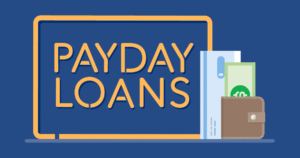Why Small Business Checking Account Features Matter
Running a small business in the USA—whether you’re a freelancer, a sole proprietor, or managing a growing LLC—requires smart financial management. A small business checking account is more than just a place to store your money; it’s a tool that can streamline operations, reduce costs, and support growth. But with so many options available, how do you choose the right one? The answer lies in understanding the small business checking account features that align with your business needs.
This guide dives deep into the essential features of business checking accounts, drawing from detailed analyses of offerings from major banks like Bank of America and PNC, as well as insights from industry resources like Guaranty State Bank’s recommendations. We’ll explore why these features matter, how they apply to real-world scenarios, and common mistakes to avoid. Whether you’re a retail shop in New York, a tech startup in California, or a restaurant in Texas, this 6000+ word pillar article will equip you with the knowledge to select an account that drives success.
The Problem: Navigating the Complexity of Business Banking
Choosing a business checking account can feel overwhelming. Banks offer a dizzying array of features, fees, and fine print. For example, some accounts charge monthly fees unless you maintain a high balance, while others limit free transactions or cash deposits. Misjudge your needs, and you could face unexpected costs or miss out on tools that streamline your operations. The stakes are high: a 2023 survey by the U.S. Small Business Administration found that 60% of small businesses cited cash flow management as a top challenge, and the right checking account can make or break your financial efficiency.
Why This Guide Exists
This article addresses the reader’s core question: What are the key small business checking account features to look for? By analyzing offerings from leading banks and synthesizing expert recommendations, we’ll provide a comprehensive, actionable roadmap. Unlike generic articles that skim the surface, this guide offers in-depth insights, practical examples, and comparisons tailored to U.S. businesses. We’ll also include a chart comparing top accounts and a FAQ section to address lingering questions.
The “What” and “Why” of Small Business Checking Accounts
What Is a Small Business Checking Account?
A small business checking account is a bank account designed for businesses, distinct from personal accounts. It supports daily operations like receiving payments, paying vendors, and managing payroll. Unlike personal accounts, these accounts offer features tailored to business needs, such as higher transaction limits, merchant services, and integration with accounting software. They also ensure compliance by separating business and personal finances, which is critical for tax purposes and legal liability, especially for LLCs and corporations.
Why Do Small Business Checking Account Features Matter?
The right features can save time, reduce costs, and enhance financial control. For example:
- A retail store processing frequent credit card payments needs robust merchant services.
- A freelancer with irregular income benefits from low or no monthly fees to avoid eating into profits.
- A construction company depositing large cash amounts requires generous cash deposit limits.
Choosing an account with misaligned features can lead to unnecessary fees, limited functionality, or missed growth opportunities. For instance, a business exceeding a bank’s free transaction limit might pay $0.50 per extra transaction, adding up quickly for high-volume operations.
The Broader Context: Small Business Banking in the USA
In 2025, U.S. small businesses face unique challenges: rising operational costs, digital transformation, and increasing fraud risks. The Federal Reserve’s 2024 Small Business Credit Survey noted that 71% of small businesses sought financial products to manage cash flow, with checking accounts being the most common. Meanwhile, the rise of online banks like Bluevine and Novo has intensified competition, pushing traditional banks to enhance digital tools and incentives. Understanding these trends helps you evaluate which features are non-negotiable for your business.
Essential Small Business Checking Account Features: A Deep Dive
Based on analyses of Bank of America’s Business Advantage Banking, PNC’s Basic Business Checking, and Guaranty State Bank’s recommendations, here are the 10 essential small business checking account features to prioritize, with detailed explanations and practical applications.
1. Low or No Monthly Maintenance Fees
Why It Matters: Monthly fees can erode profits, especially for startups or businesses with tight margins. A 2024 Forbes report estimated that small businesses lose $500–$1,000 annually on unnecessary banking fees.
What to Look For:
- Accounts with no monthly fees or easily achievable waiver conditions.
- Examples of waiver conditions:
- Maintain a minimum balance (e.g., $500 for PNC, $5,000 for Bank of America Fundamentals).
- Meet transaction thresholds (e.g., $500 in debit card purchases).
- Enroll in rewards programs (e.g., Bank of America’s Preferred Rewards for Business).
Practical Application:
- A coffee shop in Seattle with seasonal revenue might struggle to maintain a $5,000 balance in slower months. PNC’s $500 balance requirement or Novo’s no-fee model would be more suitable.
- Bank of America Example: The Business Advantage Fundamentals™ Banking account ($16/month) waives fees with a $5,000 average balance or $500 in debit card purchases, ideal for businesses with consistent card usage.
- PNC Example: The Basic Business Checking ($12/month) waives fees with a $500 balance, a lower threshold than Bank of America, benefiting smaller operations.
Common Mistake: Choosing an account without understanding waiver conditions, leading to unexpected fees. Always calculate your average balance and transaction patterns before committing.
2. Unlimited or High Transaction Limits
Why It Matters: Businesses with frequent transactions (e.g., retail, e-commerce) need accounts that don’t penalize high activity. Fees for exceeding transaction limits can accumulate quickly.
What to Look For:
- Accounts offering unlimited transactions or high free transaction limits (e.g., 150–500 per month).
- Low per-transaction fees for exceeding limits (e.g., $0.45–$0.50).
Practical Application:
- An e-commerce store processing 300 monthly transactions would benefit from American Express Business Checking (unlimited transactions) over PNC’s 150-transaction cap ($0.50 per extra transaction).
- Bank of America Example: The Business Advantage Relationship Banking account allows 500 free transactions, ideal for high-volume businesses, compared to 200 for Fundamentals.
- PNC Example: The 150-transaction limit suits smaller businesses but may constrain retail or service businesses with frequent deposits or payments.
Common Mistake: Underestimating transaction volume. Track your monthly deposits, withdrawals, and checks to ensure the account’s limit aligns with your needs.
3. Robust Online and Mobile Banking
Why It Matters: Digital tools save time and enable 24/7 account management, critical for businesses operating outside traditional banking hours. A 2023 J.D. Power study found that 68% of small businesses prefer mobile banking for daily operations.
What to Look For:
- Mobile check deposit for remote deposits.
- Online bill pay to streamline vendor payments.
- Real-time alerts for transactions or low balances.
- Cash flow tools to monitor revenue and expenses.
Practical Application:
- A freelance graphic designer in Miami can deposit client checks via PNC Mobile Accept® or Bank of America’s Mobile Check Deposit, avoiding branch visits.
- Bank of America Example: Business Advantage 360 offers cash flow projections, transaction monitoring, and Zelle® integration, ideal for businesses managing multiple revenue streams.
- PNC Example: Cash Flow Insight® provides spend analysis and mobile deposits, with a 60-day free trial for advanced tools like Payables and Receivables.
Common Mistake: Overlooking app usability. Test the bank’s mobile app for intuitive navigation and compatibility with your devices before opening an account.
4. Integration with Accounting Software
Why It Matters: Syncing with tools like QuickBooks, Xero, or Wave reduces manual bookkeeping, saving time and minimizing errors. A 2024 Intuit survey found that 55% of small businesses cite accounting errors as a major operational issue.
What to Look For:
- Seamless integration with popular accounting platforms.
- Automated transaction categorization and reporting.
Practical Application:
- A small law firm in Chicago can sync its PNC account with QuickBooks to automate expense tracking, reducing time spent on tax preparation.
- Bank of America Example: Integration with QuickBooks and ADP streamlines payroll and financial reporting, especially for businesses with employees.
- PNC Example: Cash Flow Insight® syncs with QuickBooks (free for 60 days), but ongoing fees may apply, unlike Bluevine’s free integrations.
Common Mistake: Assuming all banks offer free integrations. Confirm whether integrations are included or require additional subscriptions.
5. ATM Access and Fee Reimbursement
Why It Matters: Businesses handling cash (e.g., retail, restaurants) need convenient ATM access without incurring fees. Non-reimbursed ATM fees can cost $3–$5 per transaction.
What to Look For:
- Access to a large ATM network (e.g., 10,000+ ATMs).
- Reimbursement for out-of-network ATM fees.
Practical Application:
- A food truck in Austin benefits from PNC’s 60,000+ ATMs (including partners) for free cash deposits, but non-PNC ATM fees apply, unlike Novo’s unlimited reimbursements.
- Bank of America Example: 16,900 ATMs nationwide support cash-heavy businesses, but no reimbursement for non-network fees.
- PNC Example: Free PNC ATM transactions are a plus, but businesses in rural areas may face fees at non-partner ATMs.
Common Mistake: Ignoring ATM locations. Check the bank’s ATM map to ensure coverage in your operating area.
6. Interest-Bearing Accounts
Why It Matters: Earning interest on idle funds can offset fees or boost savings, though rates are often low (0.01%–2.0% APY). This is especially valuable for businesses with consistent cash reserves.
What to Look For:
- Competitive APY (Annual Percentage Yield).
- Minimal balance requirements to earn interest.
Practical Application:
- A consulting firm with $10,000 in reserves could earn $100–$200 annually with a 1.0%–2.0% APY account like Bluevine Business Checking, unlike PNC’s non-interest-bearing Basic account.
- Bank of America Example: The Business Advantage Savings account offers interest (rate not specified), but checking accounts don’t, limiting earning potential.
- PNC Example: The Basic Business Checking doesn’t earn interest, but PNC’s Business Interest Checking offers up to 0.01% APY, less competitive than Bluevine.
Common Mistake: Prioritizing interest over fees. High-APY accounts may have strict balance requirements or fees that outweigh earnings.
7. Fraud Protection and Security Features
Why It Matters: Cybercrime costs U.S. small businesses $2.8 billion annually, per the FBI’s 2024 Internet Crime Report. Robust security protects against unauthorized transactions and scams.
What to Look For:
- $0 liability guarantees for unauthorized transactions.
- Real-time fraud monitoring and customizable alerts.
- Secure online banking protocols (e.g., two-factor authentication).
Practical Application:
- A retail store in Denver can rely on Bank of America’s fraud alerts to detect suspicious activity, like unauthorized debit card use.
- Bank of America Example: Offers industry-leading security, $0 liability, and customizable alerts for balance changes or irregular activity.
- PNC Example: Provides fraud monitoring, text/email alerts, and $0 liability for debit card fraud, meeting industry standards.
Common Mistake: Neglecting to set up alerts. Configure fraud notifications immediately after opening an account to stay proactive.
8. Payroll and Merchant Services
Why It Matters: Streamlined payment processing and payroll reduce administrative burdens. Businesses accepting card payments or managing employees need integrated solutions.
What to Look For:
- Integration with ADP, QuickBooks Payroll, or similar platforms.
- Merchant services for credit/debit card payments with competitive rates.
Practical Application:
- A restaurant in Atlanta can use Bank of America’s merchant services to process card payments and ADP integration for payroll, saving hours weekly.
- Bank of America Example: Supports ADP, QuickBooks Payroll, and merchant services, ideal for businesses with employees or high card transaction volumes.
- PNC Example: PNC Mobile Accept® enables card payments, but payroll integrations are less emphasized, requiring a separate Merchant Services account.
Common Mistake: Overlooking processing fees. Compare merchant service rates (e.g., 2.6% + $0.10 per transaction) to ensure cost-effectiveness.
9. Access to Business Banking Support
Why It Matters: Personalized support from business bankers helps navigate loans, credit lines, or complex financial needs. A 2024 J.D. Power survey found that 62% of small businesses value dedicated support.
What to Look For:
- Access to dedicated business bankers via phone, chat, or in-person.
- Extended support hours for busy entrepreneurs.
Practical Application:
- A construction company in Phoenix can consult PNC’s business bankers (877-BUS-BNKG) to explore financing options for equipment purchases.
- Bank of America Example: Offers Small Business Specialists (888.BUSINESS, Mon–Fri 8 a.m.–10 p.m. ET) and 4,300 branches for in-person support.
- PNC Example: Provides 2,600 branches and phone support (Mon–Fri 8:30 a.m.–8 p.m. ET), slightly less extensive than Bank of America.
Common Mistake: Relying solely on online support. For complex needs, prioritize banks with local branches or dedicated advisors.
10. Welcome Bonuses or Incentives
Why It Matters: Cash bonuses ($200–$500) provide immediate financial relief, especially for startups. However, long-term account value should outweigh short-term incentives.
What to Look For:
- Bonuses requiring achievable conditions (e.g., minimum deposits, transactions).
- Clear terms to avoid disqualification (e.g., no recent account closures).
Practical Application:
- A new bakery in Boston can earn PNC’s $400 bonus by maintaining a $2,000 balance and completing 10 transactions, offsetting initial setup costs.
- Bank of America Example: Offers a $200 bonus for depositing $5,000 in new money and maintaining it for 90 days, less generous but with a higher deposit requirement.
- PNC Example: The $400 bonus is competitive, but restrictions (no prior PNC accounts, revenue under $5 million) may exclude some businesses.
Common Mistake: Chasing bonuses without evaluating fees. A high bonus may not justify ongoing costs if the account doesn’t fit your needs.
Comparing Top Small Business Checking Accounts
To help you choose, here’s a comparison of PNC Basic Business Checking, Bank of America Business Advantage Banking, and two competitors (Bluevine Business Checking and Novo Business Checking) based on the 10 essential features. This table summarizes key differences:
| Feature | PNC Basic Business Checking | Bank of America Fundamentals | Bank of America Relationship | Bluevine Business Checking | Novo Business Checking |
| Monthly Fee | $12 (waivable with $500 balance) | $16 (waivable with $5,000 balance) | $29.95 (waivable with $15,000 balance) | $0 | $0 |
| Transaction Limit | 150 free ($0.50/extra) | 200 free ($0.45/extra) | 500 free ($0.45/extra) | Unlimited | Unlimited |
| Cash Deposit Limit | $5,000 free ($0.30/$100 after) | $7,500 free ($0.30/$100 after) | $20,000 free ($0.30/$100 after) | No cash deposits | No cash deposits |
| Online/Mobile Banking | Cash Flow Insight®, mobile deposits | Business Advantage 360, Zelle® | Business Advantage 360, Zelle® | Mobile deposits, bill pay | Invoicing, mobile deposits |
| Accounting Integration | QuickBooks (free for 60 days) | QuickBooks, ADP | QuickBooks, ADP | QuickBooks, Wave | QuickBooks, Xero |
| ATM Access | 60,000+ ATMs, no non-PNC reimbursement | 16,900 ATMs, no reimbursement | 16,900 ATMs, no reimbursement | 37,000+ MoneyPass ATMs, reimbursements | Unlimited reimbursements |
| Interest-Bearing | No | No (savings account available) | No (savings account available) | Up to 2.0% APY | No |
| Fraud Protection | $0 liability, fraud alerts | $0 liability, fraud alerts | $0 liability, fraud alerts | $0 liability, fraud alerts | $0 liability, fraud alerts |
| Payroll/Merchant Services | PNC Mobile Accept® | ADP, merchant services | ADP, merchant services | Limited payroll support | Invoicing, Stripe integration |
| Business Banking Support | 2,600 branches, phone support | 4,300 branches, specialists | 4,300 branches, specialists | Online only | Online only |
| Welcome Bonus | $400 ($2,000 balance, 10 transactions) | $200 ($5,000 deposit) | $200 ($5,000 deposit) | None | None |
Key Takeaways:
- PNC: Best for small businesses with low balances and moderate transactions, with a strong branch/ATM network and generous bonus.
- Bank of America: Ideal for businesses with higher transaction volumes or cash deposits, with robust digital tools and payroll integration.
- Bluevine: Suits digital-first businesses with unlimited transactions and high APY, but no cash deposit support.
- Novo: Perfect for startups with low fees and unlimited ATM reimbursements, but lacks physical banking options.
Practical Applications: Choosing the Right Account for Your Business
Scenario 1: Retail Store with High Cash Transactions
- Needs: High cash deposit limits, merchant services, ATM access.
- Best Fit: Bank of America Business Advantage Relationship Banking ($20,000 free cash deposits, merchant services) or PNC Basic Business Checking ($5,000 free deposits, 60,000+ ATMs).
- Why: These accounts support cash-heavy operations with large ATM networks and reasonable deposit limits. Bluevine and Novo are unsuitable due to no cash deposit options.
Scenario 2: Freelancer or Sole Proprietor
- Needs: Low/no fees, mobile banking, accounting integration.
- Best Fit: Bluevine Business Checking (no fees, unlimited transactions, QuickBooks integration) or Novo Business Checking (no fees, invoicing tools).
- Why: Low-cost, digital-first accounts suit freelancers with minimal physical banking needs. PNC’s $500 balance requirement is achievable but less flexible.
Scenario 3: Growing LLC with Employees
- Needs: Payroll integration, high transaction limits, business banking support.
- Best Fit: Bank of America Business Advantage Relationship Banking (500 transactions, ADP integration, 4,300 branches) or PNC Basic Business Checking (with payroll via Cash Flow Insight®).
- Why: Robust payroll and support options cater to complex needs, while high transaction limits accommodate growth.
Common Mistakes to Avoid When Choosing a Business Checking Account
- Ignoring Fee Structures: Failing to meet waiver conditions (e.g., PNC’s $500 balance) can lead to monthly fees. Always model your cash flow to ensure you qualify.
- Overlooking Transaction Limits: Exceeding limits (e.g., PNC’s 150 transactions) incurs fees. Track your monthly activity to choose an appropriate account.
- Neglecting Digital Tools: A clunky mobile app can waste time. Test apps or read reviews (e.g., on App Store or Google Play) before committing.
- Chasing Bonuses Blindly: A $400 bonus (PNC) is tempting but irrelevant if fees or restrictions don’t align with your needs.
- Underestimating Fraud Risks: Not setting up alerts or two-factor authentication increases vulnerability. Enable all security features immediately.
- Choosing Based on Brand Alone: Big banks like Bank of America offer branch access, but online banks like Bluevine may better suit digital businesses.
Broader Context: Trends and Challenges in Small Business Banking
Digital Transformation
The rise of online banks like Bluevine, Novo, and Mercury reflects a shift toward digital-first banking. These banks offer no fees, unlimited transactions, and high APYs, challenging traditional banks. However, businesses needing in-person services (e.g., cash deposits) still rely on banks like PNC or Bank of America.
Fraud and Security
The FBI’s 2024 Internet Crime Report highlights a surge in business email compromise and check fraud. Choosing accounts with robust fraud protection (e.g., PNC’s alerts, Bank of America’s $0 liability) is critical.
Economic Pressures
With inflation and rising costs in 2025, small businesses prioritize low-fee accounts. The Federal Reserve’s 2024 Small Business Credit Survey noted that 65% of businesses sought cost-effective financial products, making features like fee waivers and bonuses increasingly important.
Safety Precautions: Protecting Your Business Finances
- Enable Two-Factor Authentication: Use apps like Authy or SMS-based verification to secure online banking.
- Monitor Accounts Daily: Set up alerts for large transactions or low balances to catch issues early.
- Avoid Public Wi-Fi: Use secure networks or VPNs when accessing banking apps to prevent data breaches.
- Train Employees: Educate staff on phishing scams and proper handling of banking credentials.
- Review Statements: Check monthly statements for unauthorized transactions, as errors can take 30–60 days to resolve.
Frequently Asked Questions
What is the most important feature of a small business checking account?
The most important feature depends on your business. For startups, low or no monthly fees (e.g., Bluevine, Novo) are critical. For retail, high cash deposit limits (e.g., Bank of America Relationship) matter most. Assess your transaction volume and banking habits to decide.
Can I use a personal checking account for my business?
No. Mixing personal and business finances complicates taxes and increases legal liability, especially for LLCs or corporations. A small business checking account ensures compliance and offers tailored features like merchant services.
Are online-only banks safe for small businesses?
Yes, if FDIC-insured (up to $250,000). Banks like Bluevine and Novo offer robust security (e.g., $0 liability, fraud alerts), but lack branches for cash deposits, which may not suit all businesses.
How do I qualify for a welcome bonus?
Bonuses (e.g., PNC’s $400, Bank of America’s $200) typically require a minimum deposit ($2,000–$5,000) and transactions (e.g., 10 debit card purchases). Check terms to avoid disqualification, like prior account ownership.
Disclaimer: This content is for informational purposes only. Always consult a qualified financial professional for banking advice and decisions.



